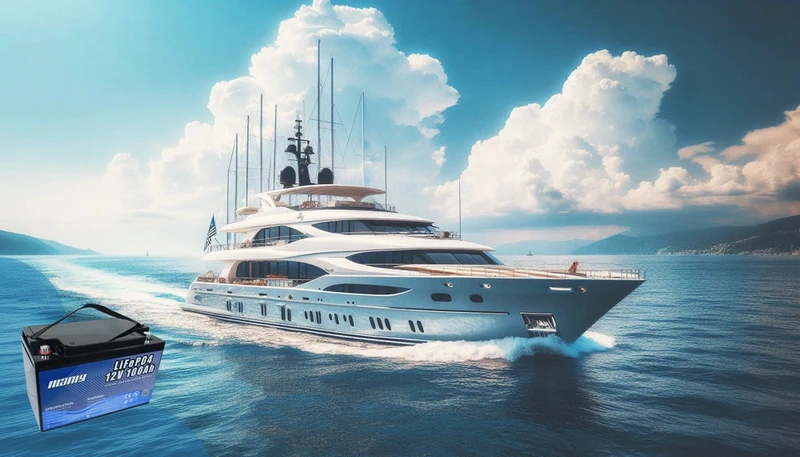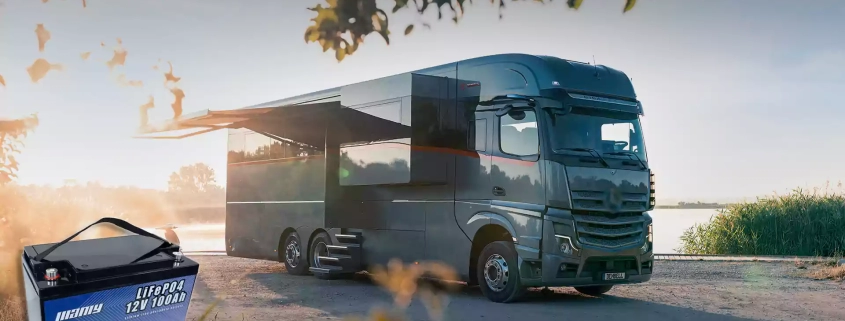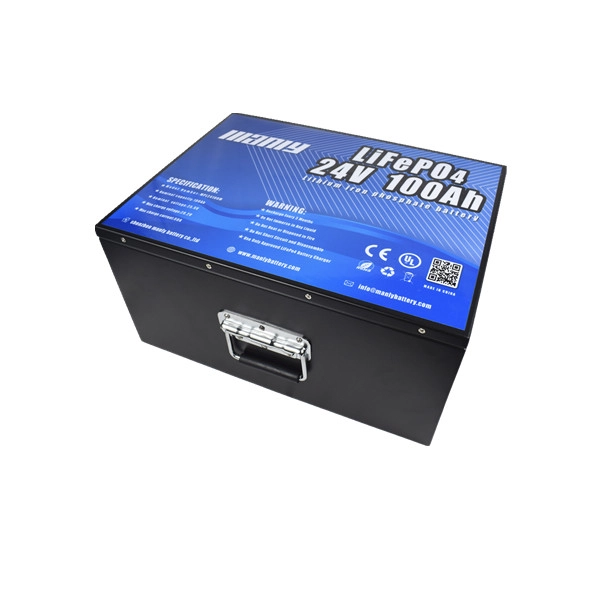Charge a Marine Battery: Step-by-Step Guide
Table of Contents
- Charge a Marine Battery: Step-by-Step Guide
- Understanding Marine Batteries
- Preparing to Charge Your Marine Battery
- Step-by-Step Guide: How to charge a marine battery
- Best Practices for Marine Battery Maintenance
- Conclusion
- FAQ
- Hot Resarch
- The 6 Best Lithium Batteries for Motorhome
- The advantages of welcome robot
- Introduction and function of welcome robot
- Functions of Welcome Robot
- Different Types Of Welcome Robot
- The Power Drive: Top Batteries for Robotics
Marine batteries are the lifeblood of any boat—they power your engine, lights, gauges, and all the essential onboard electronics. Without a healthy battery, your boat is a pretty shell on the water. In this article, we dive into the burning question: how do I charge a marine battery? We’ll explore everything from the ins and outs of battery types to a step-by-step guide on charging. Plus, we’ll compare the advantages of a marine li ion battery with those of traditional marine deep cycle batteries. Let’s get started on this exciting journey to keep your boat powered and your adventures safe!
Understanding Marine Batteries
1. Types of Marine Batteries
Not all marine batteries are created equal. When it comes to powering your boat, you typically have three choices:
- Starting Batteries: These provide that quick, powerful burst of energy to get your engine running, but they’re not built for long-term power.
- Deep Cycle Batteries: Designed for sustained power delivery, these batteries keep your lights, electronics, and other accessories humming for hours.
- Dual-Purpose Batteries: These offer a blend of starting and deep cycle capabilities, which can be handy on smaller vessels with limited space.
Most boaters prefer marine deep-cycle batteries for extended use and reliability. These batteries handle deep discharges better, ensuring their boats stay powered even during extended trips.
2. Battery Chemistry and Technology
Battery chemistry plays a pivotal role in performance and longevity. Traditional chemistries—like lead-acid, AGM, and gel—have long been the go-to options. However, a modern contender is changing the game: the marine li ion battery.
Why choose a marine li ion battery? Because it’s lightweight, lasts significantly longer, and requires minimal maintenance compared to conventional batteries. Think of it as upgrading from an old clunker to an award-winning sports car in the world of batteries. This cutting-edge technology improves performance and enhances safety and efficiency, making it a popular choice among serious boaters.
Learn more about lithium-ion battery technology on Wikipedia.
Preparing to Charge Your Marine Battery
Before you begin the charging process, a little preparation goes a long way toward ensuring safety and efficiency.
1. Assessing Your Battery’s Condition and Type
First, give your battery a thorough once-over. Check its age, inspect for any signs of corrosion, and verify the battery type. Understanding whether you’re dealing with a marine li ion battery or deep cycle batteries is crucial—it influences which charger to use and how you’ll maintain it. A well-maintained battery lasts longer and performs better when you charge a marine battery.
2. Choosing the Right Charger
Next up is selecting the correct charger. You generally have two main options:
- Onboard Chargers: Permanently installed on your boat, these chargers make it super convenient to power up as long as you have access to a standard outlet.
- Portable Chargers: These allow you to charge your battery wherever you are, which is ideal for smaller boats or when space is at a premium.
Make sure the charger you choose matches your battery’s chemistry and voltage. This step is especially important for those opting for a marine li ion battery or deep cycle batteries—using the wrong charger can lead to underperformance or even damage.
3. Safety Precautions Before Charging
Safety should always be your top priority. Here are some key precautions:
- Work in a Safe Environment: Charge your battery in a well-ventilated area and ensure the temperature is within the manufacturer’s recommended range.
- Clean Battery Terminals: Dirty or corroded terminals can interfere with the charging process, so give them a good clean before you connect anything.
- Gear Up: Wear protective gear such as gloves and eye protection to prevent mishaps.
- Follow Manufacturer Guidelines: Always adhere to the specific recommendations provided by your battery and charger manufacturers.
By taking these simple steps, you will ensure your safety and optimize the performance and lifespan of your battery.
Step-by-Step Guide: How to charge a marine battery
Let’s get into the nitty-gritty of charging your boat’s power source. Follow these steps, and you’ll power up like a pro in no time!
1. Cleaning and Inspecting Battery Terminals
Before you plug anything in, clean your battery terminals. Dirty or corroded terminals can prevent your charger from doing its job, and no one wants a slow charge on a hot day!
- Tip: Mix some baking soda with water, scrub gently with a soft brush, and wipe dry.
- Why It Matters: Clean connections ensure that every bit of energy flows efficiently when you charge a marine battery.
2. Connecting the Charger
Now, let’s hook everything up:
- Positive (Red) Cable: Firmly attach this to the positive terminal.
- Negative (Black) Cable: Connect it securely to the negative terminal.
Double-check your connections, whether using a smart charger that adjusts the current automatically or a trusty manual charger. This step is vital, especially when working with a marine li ion battery or marine deep cycle batteries. Once the cables are locked in, plug in your charger and power it up. Easy as pie, right?
3. Monitoring the Charging Process
Keep an eye on your battery as it charges—this is where modern tech shines:
- LED Indicators: These give you a quick look at the charge level.
- Smart Apps & Timers: Many chargers have apps or built-in timers to let you know when you’re full.
By actively monitoring, you prevent overcharging and ensure your battery gets the right amount of juice.
4. Disconnecting the Charger Safely
When your battery is fully charged, it’s time to disconnect—but do it safely:
- Unplug the Charger: Always start by unplugging the charger from the wall.
- Remove the Negative Cable: Disconnect the black cable first.
- Disconnect the Positive Cable: Finally, remove the red cable.
Following this order helps prevent accidental short-circuits and keeps your battery in shape.
Best Practices for Marine Battery Maintenance
Regular maintenance keeps your battery performing like a champ. Here’s how to keep those power levels up!
1. Maintenance Tips for Prolonging Battery Life
- Routine Inspections: Check for any signs of corrosion or wear on the terminals.
- Clean Regularly: A little cleaning goes a long way in ensuring your connections are solid.
- Water Topping: Top up with distilled water when needed for lead-acid batteries.
By following these habits, you’ll always be ready to charge a marine battery and hit the water confidently.
2. Optimizing Charging Cycles
Different batteries have different needs:
- For a marine li ion battery: Enjoy the benefits of minimal maintenance and the ability to handle deeper discharges.
- For marine deep cycle batteries: Stick to regular, shallow discharges to keep them healthy over the long haul.
Tailoring your charging cycle to the specific battery type maximizes performance and extends lifespan.
3. Troubleshooting Common Issues
Even the best-maintained batteries can run into issues. Watch out for:
- Overcharging: This can overheat your battery and cause damage.
- Undercharging: Leaves your battery underpowered.
- Terminal Corrosion: Hinders efficient energy transfer.
If you notice any problems, check your charger settings and ensure you use the right equipment for your battery type.
Conclusion
1. Recap of Key Points
We’ve broken down how to charge a marine battery step by step—from cleaning and connecting to monitoring and safe disconnection. Each stage is crucial for keeping your boat’s power system in peak condition.
2. Final Tips for Maintaining Both Marine li ion battery and marine deep cycle batteries
Whether you opt for the cutting-edge marine li ion battery or the reliable marine deep cycle batteries, proper care and regular maintenance are your best friends. Tailor your charging habits to your battery’s specific needs, and you’ll enjoy award-winning performance on every trip.
3. Encouragement to Follow Best Practices for Reliability on the Water
Stick to these best practices, and you’ll be cruising with confidence. Keeping your battery in prime condition means fewer hassles and more time enjoying your time on the water. Let’s keep those adventures rolling, shall we?
For more detailed battery care tips and industry insights, check out reputable sources like the U.S. Department of Energy or Wikipedia’s battery technology page. Happy boating!
FAQ
1. Can you charge a marine battery with a regular charger?
While you technically can, it’s not recommended. Marine batteries require a charger that matches their specific chemistry and voltage. A regular charger may not provide the proper charging profile, leading to undercharging, overcharging, or even damage over time.
2. What is the best way to charge a boat battery?
The best way is to use a charger specifically designed for your battery type. Follow a step-by-step process: clean and inspect the terminals, connect the positive and negative cables correctly, monitor the charging process using bright indicators, and disconnect safely when fully charged. This ensures efficiency and longevity.
3.What kind of charger do I need for a marine battery?
You need a charger that is tailored to your battery’s chemistry—whether it’s a marine li ion battery or marine deep cycle batteries. Look for chargers with the correct voltage, charging algorithm, and safety features like automatic shut-off and intelligent monitoring for optimal performance.
Hot Resarch
Marine Battery Battery Manufacturer Lithium Battery
Hello
Welcome robot has the following advantages:
1. It can stand by for 24 hours, and can not eat, drink, sleep, and have no human emotions. At most, it can be charged when the store is closed at night.
2. Robots can use big data to analyze, aggregate user information, and draw key information. Data reports can also be directly and systematically exported, which is much stronger than manual registration.
3. Improve the sense of technology and attract customers. Whether it is an adult or a child, passing by will always be more curious about intelligent robots.
4. More efficient and standardized operations, especially in government and enterprise service halls, hotels, museums and other places, after customers arrive, basic tasks can be completed independently, and the whole process service attitude is better.
5. During the epidemic, some companies’ robots can also perform body temperature detection, repeated broadcast of epidemic prevention publicity and other services.
6. To stand out among many competitors, user experience and exclusive experience are very important.
Manly focus on lithium battery with 13+ years experience, certified by IEC61960, IEC62133, UL2054, UL1642. We can custom lithium battery pack for you, which is safety and long service life.
The welcome robot is a high-tech exhibit that integrates speech recognition technology and intelligent motion technology. The robot is humanoid, and its height, body shape and expression are all striving to be lifelike, kind, cute, beautiful, generous, and lifelike. A sense of humanization.
Functions of Welcome Robot
Table of Contents
Autonomous welcome:
place the robot on the venues, hotels, shopping malls and other activities and promotion sites. When guests pass by, the robot will take the initiative to say hello: “Hello! Welcome.” When the guests leave, the robot will say: “Hello, welcome. next visit”.
Welcome speech:
The exhibition robot can deliver a “welcome speech” to the guests on the stage and on the spot. The “welcome speech” can be formulated by the user first, and then expressed through the robot’s unique voice effect after programming input.
Action display:
During the exhibition, the robot can perform talent shows such as singing, storytelling, and reciting poetry. The robot is also equipped with head, eye, mouth, and arm movements to fully demonstrate the entertainment function of the robot.
Human-machine dialogue:
The robot has the most advanced speech recognition function in today’s technology. On-site guests can use the microphone to ask many questions to the robot. The content of the dialogue can be formulated according to the user’s needs, and the robot answers the guests’ questions in humorous language. Through man-machine dialogue, the content of this event or celebration can be fully displayed to the on-site guests, and at the same time, the participation and entertainment of the guests can be increased, and a good interactive effect can be produced.
Different Types Of Welcome Robot
In the ever-evolving landscape of robotics, welcome robots have emerged as fascinating and practical solutions to enhance guest experiences and provide efficient customer service. Designed to greet and assist visitors, these robots combine cutting-edge technology, friendly personalities, and a wide range of capabilities. In this article, we will introduce you to various types of welcome robots, showcasing their unique features and applications.
Reception Robots
Reception robots specialize in front-desk and reception duties, making them indispensable in hotels, corporate offices, and other establishments. These robots are designed to welcome guests, manage check-in processes, and provide essential information about the facility. Reception robots often come equipped with touchscreens or voice interfaces, allowing visitors to access real-time updates on schedules, room availability, amenities, and local attractions. By automating the check-in process and handling routine inquiries, reception robots enhance efficiency and ensure a seamless arrival experience for guests.

Service Robots
Service robots are the epitome of efficiency and practicality when it comes to welcoming guests. These robots excel in tasks such as providing directions, answering frequently asked questions, and offering assistance with luggage or personal belongings. Equipped with advanced navigation systems, sensors, and mapping technology, service robots can autonomously navigate complex environments such as airports, shopping malls, and hotels. They ensure a smooth and hassle-free experience for visitors, saving time and reducing the workload of human staff.
Social Robots
Social robots are designed to create engaging and interactive experiences for visitors. These robots possess the ability to recognize and respond to human emotions, making them ideal companions for individuals in various settings. Social robots greet visitors with personalized messages, engage in conversations, and even showcase expressive gestures and facial expressions. With their natural language processing capabilities, they can hold meaningful dialogues, share information, and provide entertainment. Social robots are particularly effective in environments such as museums, exhibitions, and public spaces, where they offer a unique blend of companionship and amusement.

Multilingual Robots
Multilingual robots are specifically programmed to overcome language barriers and cater to a diverse range of visitors. These robots possess advanced language translation capabilities, enabling them to communicate with guests in their native language. By offering real-time translation services, multilingual robots facilitate effective communication, provide information, and create a welcoming environment for international visitors. They are particularly valuable in tourist destinations, international conferences, and global events.
Guiding Robots
Guiding robots excel in providing navigational support and information to visitors in large spaces like museums, exhibitions, and airports. Equipped with cameras, sensors, and mapping technologies, these robots can guide guests to specific locations, offer information about exhibits or points of interest, and even narrate historical or educational content. Guiding robots enhance the overall visitor experience by offering personalized and interactive tours, ensuring guests have a memorable and enriching time.
Hospitality Robots
Hospitality robots are designed to enhance the overall experience of guests staying in hotels or resorts. These robots can perform a variety of tasks, such as delivering amenities, providing weather updates, managing room controls, and even entertaining guests with games or multimedia content. With their ability to interact and adapt to individual preferences, hospitality robots create a unique and personalized experience, ensuring guests feel valued and cared for throughout their stay.
Informational Robots
Informational robots act as knowledgeable assistants in public spaces, helping visitors with inquiries and providing relevant information. Equipped with vast databases, these robots can answer questions about nearby attractions, transportation schedules, restaurant recommendations, and other local information. By offering accurate and up-to-date information, informational robots become invaluable resources, empowering guests to explore new places confidently.
The Power Drive: Top Batteries for Robotics
Robotics is a fast-growing field that requires highly efficient power sources. As the heart of any robot, the battery greatly influences a robot’s performance, lifespan, and capabilities. Therefore, choosing the right robot battery is critical. This article aims to guide you through the complex world of batteries for robotics, highlighting top manufacturers, including MANLY Battery.
The Lifeline of Robotics – The Battery
Robots are no longer just characters in science fiction movies. They have invaded every sector, from manufacturing and healthcare to education and home automation. Powering these machines are batteries, the lifeline that sustains their operations.
The main factors to consider while selecting robot batteries include:
- Capacity: Measured in ampere-hours (Ah), it denotes how much power a battery can store.
- Discharge Rate: It shows how quickly a battery can deliver power.
- Lifecycle: It indicates the number of charge and discharge cycles a battery can go through before its capacity falls below 80%.
- Price: The cost of the battery is essential, especially for those looking for cheap LiFePO4 batteries.
Types of Robot Batteries
There are several types of batteries used in robotics, with each type having its unique characteristics. They include:
- Lithium-ion (Li-ion) Batteries: These batteries offer high energy density and long lifecycle but can be expensive.
- Lithium Iron Phosphate (LiFePO4) Batteries: These are cheaper than Li-ion batteries, have a longer lifespan, and are safer due to their thermal and chemical stability.
- Nickel-Metal Hydride (NiMH) Batteries: While cheaper, these batteries have a lower capacity and shorter lifecycle than lithium batteries.
- Lead-Acid Batteries: These are the cheapest but have the lowest energy density and the shortest lifecycle.
Leading Producers of Batteries
In the vast world of battery technology, there are some manufacturers that truly stand out due to their innovation, quality, and reliability. Here’s a look at some of the top battery producers:
- Duracell: As a household name, Duracell offers a vast selection of battery types, known for their longevity and reliability. From standard alkaline batteries to rechargeable solutions, Duracell products are trusted worldwide.
- Energizer: Another recognizable name in the market, Energizer provides a wide array of battery types. Notable for their high-energy output and long-lasting performance, Energizer batteries are commonly used in various applications, including robotics.
- Samsung SDI: A prominent player in lithium-ion technology, Samsung SDI provides high-quality, energy-efficient batteries. They are also making significant strides in the renewable energy sector with their innovative solutions.

- LG Chem: Focused on providing advanced energy solutions, LG Chem offers high-capacity lithium-ion batteries known for their efficiency and durability. They also contribute significantly to electric vehicle (EV) technology with their state-of-the-art EV batteries.
- MANLY Battery: Over a decade of industry experience, is renowned for its customized, high-quality solutions. Their products come with an impressive 10-year warranty, standing as testament to their commitment to quality and longevity. The company prides itself on rigorous factory inspections before shipping. Moreover, Manly Battery’s product line boasts remarkable features such as overvoltage and overcurrent protection, as well as resilience to significant impacts. Their Lifepo4 batteries are specially designed for easy integration, serving as a drop-in replacement for lead-acid batteries.
Selecting the right battery is vital for the efficient functioning of a robot. Factors such as capacity, discharge rate, lifecycle, and cost should guide your decision. Among the top manufacturers, MANLY Battery offers a competitive edge with its high-capacity, reliable, and affordable LiFePO4 batteries. However, the choice ultimately boils down to the specific requirements of your robotic application.







